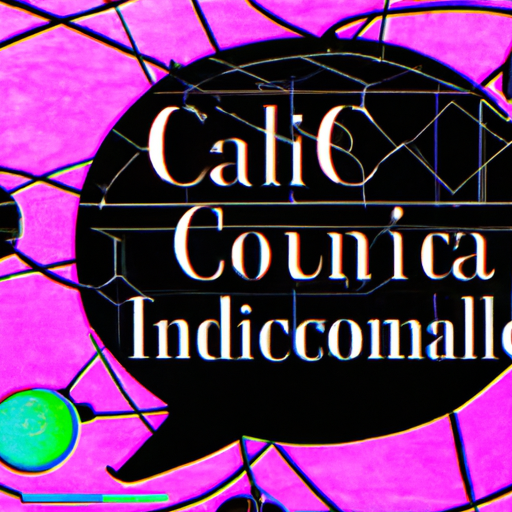You’re about to embark on a fascinating journey into the world of PDF OCR (Optical Character Recognition). In this article, we’ll explore the process of converting scanned PDFs into searchable and editable text. But that’s not all! We’ll also dive into a comprehensive comparison and review of different PDF software options, shedding light on their unique features and the pros and cons of each. Get ready to unlock the full potential of your PDF documents, making them easier to search, edit, and utilize in your everyday tasks. Let’s get started!
PDF OCR (Optical Character Recognition): Describe The Process Of Converting Scanned PDFs Into Searchable And Editable Text
Introduction to PDF OCR
PDF OCR, or Optical Character Recognition, is a technology that enables the conversion of scanned PDF documents into searchable and editable text. This process involves the extraction of text from the scanned images and converting it into machine-readable format. In this article, we will explore the importance of PDF OCR, understand the underlying technology behind it, discuss the scanning process, preprocessing techniques, available OCR software and tools, and the steps involved in converting scanned PDFs into searchable and editable text.
Importance of PDF OCR
PDF OCR plays a crucial role in various areas where accurate text extraction from scanned documents is required. Below, we will discuss some of the main reasons why PDF OCR is important.
Enhanced Text Searchability
One of the primary benefits of PDF OCR is the enhanced searchability it provides to documents. By converting scanned PDFs into searchable text, you can easily locate specific information within large volumes of documents. This saves you time and effort, especially when dealing with extensive archives or researching specific topics.
Text Extraction and Editing
PDF OCR allows you to extract text from scanned PDFs and manipulate it as needed. With the converted text, you can edit, copy, and paste the content into other documents or applications. This eliminates the need for manual retyping of scanned documents, making the editing process much more efficient and accurate.
Text-to-Speech Conversion
PDF OCR technology opens up the possibility of converting scanned documents into audio files. By using text-to-speech software, you can listen to the content of the scanned PDFs, making it accessible to individuals with visual impairments or those who prefer auditory learning.
Language Translation
PDF OCR also enables language translation of scanned PDFs. The extracted text can be fed into translation software, allowing you to convert the content into different languages. This feature proves invaluable for businesses dealing with multilingual documents or individuals requiring translations for personal or professional purposes.
Data Extraction and Analysis
With PDF OCR, you can extract structured data from scanned PDFs for further analysis or integration with other systems. This becomes particularly useful in fields such as finance, research, or data management, where automated data extraction from large volumes of documents is necessary.
Understanding Optical Character Recognition
To fully grasp the process of converting scanned PDFs into searchable and editable text, it is essential to understand the concept of Optical Character Recognition.
Definition and Function
Optical Character Recognition, commonly known as OCR, is the technology that recognizes and interprets characters from scanned images or documents. The OCR software analyzes the individual character shapes in the scanned images and translates them into machine-readable text.
OCR Techniques
There are two primary techniques used in OCR: pattern recognition and feature extraction. Pattern recognition compares the visual patterns of characters to known patterns stored in its database. Feature extraction, on the other hand, identifies specific features of characters, such as lines and curves, to recognize and differentiate them.
Accuracy and Limitations
The accuracy of OCR technology largely depends on factors like the quality of scanned images, the clarity of the text, and the language being recognized. OCR may encounter challenges with handwritten or poorly printed text, complex layouts, or unusual fonts. However, advancements in OCR algorithms and machine learning have significantly improved accuracy over time.
Scanning Process
Before the OCR process can begin, the scanned PDFs need to be created. In this section, we will discuss the scanning process, including the required hardware, image quality, file formats, and scanning tips.
Scanning Hardware
To create scanned PDFs, you need a scanner or a multifunction printer with scanning capabilities. Scanners come in various types, such as flatbed scanners, sheet-fed scanners, or portable scanners. The choice of scanner depends on factors like the volume of scanning, document size, and desired scanning speed.
Resolution and Image Quality
The resolution of the scanned images plays a crucial role in the OCR process. Higher resolution results in clearer and more accurate text recognition. It is recommended to use a resolution of at least 300 DPI (dots per inch) for optimal OCR results. Additionally, ensuring that the scanned images are not distorted or skewed is important for accurate character recognition.
File Formats
When scanning documents, it is essential to choose appropriate file formats. PDF is a popular choice as it preserves the layout and formatting of the scanned documents. However, other image formats like JPEG or TIFF can also be used for scanning purposes. It is important to ensure that the chosen file format is supported by your OCR software.
Scanning Tips
To obtain the best results during scanning, there are a few tips to keep in mind. Ensure that the documents are clean and free from smudges or tears. Use a scanner cover or lid to prevent any additional light from interfering with the scanning process. If scanning multiple pages, align them properly and remove any staples or clips that may cause issues during scanning. Finally, double-check the scanned images for any errors or missing pages before proceeding with OCR.
Preprocessing of Scanned PDFs
Preprocessing of scanned PDFs involves optimizing and enhancing the scanned images to improve OCR accuracy. In this section, we will explore the various preprocessing techniques commonly employed.
Image Cleanup
Image cleanup involves removing unwanted elements from the scanned images, such as borders, hole punches, or background noise. This process ensures that the OCR software focuses only on the relevant content for accurate text extraction.
Deskewing
Deskewing is the process of straightening scanned images that are tilted or skewed. By applying deskewing techniques, the OCR software can accurately recognize characters even if the original scanned images were not perfectly aligned.
Despeckling
Despeckling aims to remove small specks of noise or dots that may appear in the scanned images. These specks can interfere with the OCR process, leading to inaccurate text recognition. Despeckling techniques help enhance the clarity of the scanned images, improving OCR accuracy.
Dealing with Noise
Various types of noise, such as graininess or interference, can appear in scanned images. Removing or reducing this noise is essential for efficient OCR processing. Image smoothing techniques can be employed to reduce noise interference and ensure better OCR results.
Thresholding
Thresholding is the process of converting grayscale or color images into binary images consisting of only black and white pixels. This technique simplifies the OCR process by enhancing the contrast between characters and the background, improving overall recognition accuracy.
OCR Software and Tools
Several OCR software and tools are available in the market to facilitate the conversion of scanned PDFs into searchable and editable text. In this section, we will discuss some popular OCR software, open source OCR tools, and built-in OCR features in PDF software.
Popular OCR Software
Some well-known OCR software include Adobe Acrobat Pro, ABBYY FineReader, OmniPage, and Readiris. These software offer advanced OCR capabilities, along with additional features like language support, document editing, and integration with other applications.
Open Source OCR Tools
For those looking for free or open-source OCR solutions, software like Tesseract, OCRopus, and GOCR are highly regarded. These tools provide basic OCR functionality and can be customized based on specific requirements.
Built-in OCR in PDF Software
Many PDF software, such as Adobe Acrobat and Foxit PhantomPDF, come with built-in OCR functionality. These tools allow users to convert scanned PDFs into searchable and editable text directly within the PDF software, eliminating the need for separate OCR software.
Choosing the Right OCR Software
Selecting the appropriate OCR software depends on various factors. In this section, we will discuss considerations for software selection, including compatibility, accuracy, speed, additional features, and pricing.
Considerations for Selection
When choosing OCR software, compatibility with your existing systems and software is crucial. Ensure that the OCR software supports the file formats you commonly use and integrates seamlessly with your workflow.
Compatibility and Integration
Verify that the OCR software is compatible with your operating system, be it Windows, macOS, or Linux. Additionally, check if the software can integrate with other applications you regularly use, such as document management systems or content management systems.
Accuracy and Speed
OCR accuracy is a critical factor to consider. Look for software that offers high recognition accuracy, especially for complex layouts or non-standard fonts. Consider the speed of the OCR software as well, as faster processing can significantly enhance productivity when dealing with large volumes of scanned documents.
Additional Features and Pricing
Evaluate the additional features offered by the OCR software, such as language support, document editing capabilities, or batch processing options. Compare the pricing models of different software options, considering factors like licensing fees, subscription plans, or one-time purchase costs.
Converting Scanned PDFs to Text
In this section, we will delve into the process of converting scanned PDFs into searchable and editable text using OCR technology.
OCR Process Overview
The OCR process typically involves three main steps: image preprocessing, text recognition, and text output. Image preprocessing enhances the scanned images as discussed earlier. Text recognition involves the OCR software analyzing the preprocessed images and identifying the characters. Finally, the recognized text is outputted as searchable and editable text.
OCR Workflow Steps
The OCR workflow generally consists of the following steps:
- Importing Scanned PDFs: Load the scanned PDFs into the OCR software for processing.
- Preprocessing: Apply image cleanup, deskewing, despeckling, noise reduction, and thresholding techniques to improve the scanned images’ clarity.
- OCR Process: The software recognizes the characters in the processed images and converts them into text.
- Enhancing Text Recognition: Manually improve text recognition accuracy through post-OCR proofreading, where any errors or inaccuracies can be corrected.
- Output: Export the recognized text as searchable and editable text, typically in formats such as plain text, Microsoft Word, or PDF with embedded text.
Batch Processing
OCR software often provides batch processing capabilities, allowing for the conversion of multiple scanned PDFs simultaneously. This feature is particularly useful when dealing with large volumes of documents, saving significant time and effort.
Post-OCR Proofreading
Following the OCR process, it is advisable to perform a post-OCR proofreading. This involves reviewing and correcting any recognition errors or inaccuracies. Manual verification during this step ensures the highest level of accuracy in the converted text.
Searchable Text in PDFs
Once the scanned PDFs have been converted into searchable text, you can easily locate specific information within the documents using search functions. This feature proves invaluable when dealing with large document repositories, helping you quickly find the desired content.
Editable Text in PDFs
PDF OCR also allows for the conversion of scanned PDFs into editable formats. In this section, we will explore how OCR technology recognizes text areas, retains document formatting, and enables exporting as editable formats.
Recognizing Text Areas
OCR software identifies text areas within the scanned PDFs by analyzing the individual characters and their spatial arrangement. By accurately recognizing these text areas, the software ensures that the converted text remains aligned and formatted correctly.
Retaining Document Formatting
OCR technology aims to preserve the layout and formatting of the original scanned PDFs. Fonts, font sizes, headings, tables, and other document elements are retained as closely as possible in the converted text. This allows for seamless editing and manipulation of the content while maintaining the document’s overall appearance.
Exporting as Editable Formats
Once the scanned PDFs have been converted into searchable and editable text, they can be exported as various editable formats, such as Microsoft Word, plain text, or RTF (Rich Text Format). These editable formats enable users to modify the content, reformat the document, or integrate it into other applications as needed.
In conclusion, PDF OCR technology plays a vital role in converting scanned PDFs into searchable and editable text. By utilizing OCR software and following the appropriate scanning and preprocessing techniques, you can enhance text searchability, extract and edit text, convert to speech or different languages, and extract structured data for analysis. Understanding the process of OCR and selecting the right software are key factors in achieving accurate and efficient conversion results. With PDF OCR, the potential for leveraging and manipulating the content contained within scanned PDFs becomes limitless, opening up new possibilities for organizations and individuals alike.



